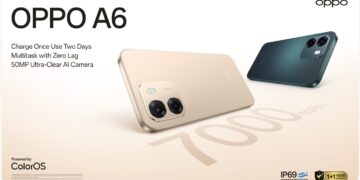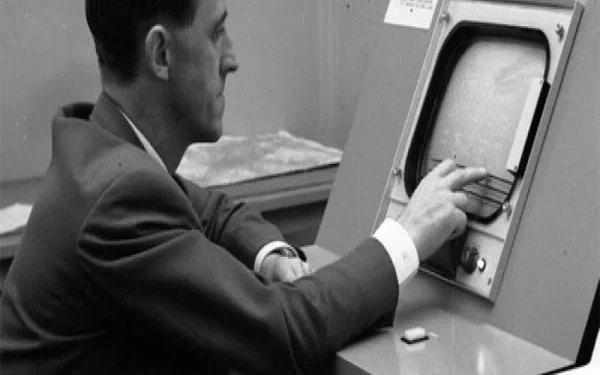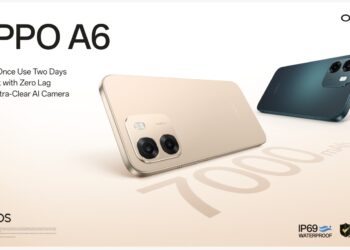Introduction: The Ubiquity of Touchscreens Today
Today, touchscreens are an integral part of our everyday lives. From smartphones and tablets to ATMs and airport kiosks, touch interfaces are everywhere. Many people associate the rise of touchscreens with modern tech giants like Apple and Samsung. However, the roots of touchscreen technology go much deeper into history than most realize.
In fact, the invention of the world’s first touchscreen device dates back to the 1960s, and the credit goes not to Silicon Valley, but to a British scientist working in the UK.
This article explores the history of touchscreen technology, the pioneering work of E.A. Johnson, the first touchscreen mobile phone, and the evolution that brought us to the modern era of touch-based devices.
The Invention of the World’s First Touchscreen Device
Who Was E.A. Johnson?
Eric Arthur Johnson, commonly referred to as E.A. Johnson, was a British engineer and scientist. He worked at the Royal Radar Establishment (RRE) in Malvern, United Kingdom, a facility known for advanced military research during the Cold War era.
Between 1965 and 1967, Johnson developed what is widely recognized as the world’s first capacitive touchscreen. His innovation was initially intended for military applications, particularly for air traffic control systems, rather than for consumer electronics.
How the First Touchscreen Worked
E.A. Johnson’s touchscreen was based on capacitive technology, which is still used today in modern devices like smartphones and tablets. Capacitive touchscreens detect touch through the electrical properties of the human body. When a finger touches the surface, it changes the local electrostatic field, and the device interprets this as input.
Johnson’s version was designed to recognize simple touch commands, mainly for position selection, which was critical for controlling air traffic on radar screens.
Published Research
In 1965, Johnson published his groundbreaking work titled “Touch display – a novel input/output device for computers” in the journal Electronics Letters. He later expanded on his research with a detailed article in 1967. His papers outlined the concepts, design, and potential applications of touchscreen technology—ideas that were far ahead of their time.
The First Practical Uses: Military and Air Traffic Control
While Johnson’s capacitive touchscreen did not immediately transform into a consumer product, it found important uses within military and aviation sectors.
Air traffic controllers could interact directly with radar displays, selecting flights and managing traffic more intuitively. This was a significant leap forward from earlier systems that relied solely on manual input devices like keyboards and trackballs.
Despite its potential, the technology remained relatively confined to specialized environments due to high costs and technological limitations of the era.
Common Misconception: Apple and Samsung Did Not Invent Touchscreens
Debunking the Myth
Many people believe that Apple or Samsung invented the touchscreen or the touchscreen phone. This misconception largely arises because these companies popularized touchscreen smartphones with innovative designs and user-friendly interfaces.
However, neither company invented the touchscreen. Their contributions lie in perfecting, commercializing, and popularizing the technology, particularly in consumer markets.
- Apple’s iPhone (released in 2007) introduced a highly responsive, multitouch capacitive screen that changed the way people interacted with mobile devices.
- Samsung has been at the forefront of expanding touchscreen technologies into larger screens, flexible displays, and high-performance smartphones.
While revolutionary, these advances were built on the groundwork laid decades earlier by inventors like E.A. Johnson and others.
The World’s First Touchscreen Mobile Phone: IBM Simon
IBM Simon Personal Communicator
When discussing the first touchscreen mobile phone, the credit goes to IBM, not Apple or Samsung. IBM developed the IBM Simon Personal Communicator, commonly known as the IBM Simon.
Launched in 1994, the IBM Simon was a groundbreaking device for its time. It combined the functionalities of a mobile phone with features typically found on a personal digital assistant (PDA).
Key Features of IBM Simon
- Touchscreen Interface: It featured a monochrome LCD touchscreen, operated with a stylus or finger.
- Calling and Messaging: Users could make phone calls and send faxes.
- Applications: It came with built-in apps such as a calendar, address book, calculator, world clock, and email client.
- Portability: Although bulky by today’s standards, it was considered revolutionary for combining multiple functions into a single device.
Thus, IBM Simon is widely regarded as the world’s first smartphone, marking the beginning of mobile touch technology that we now take for granted.
The Evolution of Touchscreen Technology: A Journey Through Time
1970s and 1980s: Advancements in Touch Technology
Following Johnson’s capacitive invention, other types of touchscreens emerged:
- Resistive Touchscreens: Developed in the 1970s, these screens rely on pressure to register input. They became popular in ATMs, retail point-of-sale terminals, and early handheld devices.
- Surface Acoustic Wave (SAW) Touchscreens: Introduced in the 1980s, these screens use ultrasonic waves to detect touches.
Each type of technology found different applications based on cost, durability, and sensitivity.
1990s: Wider Adoption
Touchscreens began appearing in more commercial devices like early PDAs (Personal Digital Assistants) from companies like Palm and HP. They were primarily stylus-operated resistive screens.
2000s: The Smartphone Revolution
The launch of the first iPhone in 2007 redefined user expectations for touchscreens. Apple’s multitouch capacitive screen allowed for gestures like pinch-to-zoom and smooth scrolling, setting new standards for responsiveness and ease of use.
Samsung and other manufacturers quickly followed, incorporating capacitive touchscreens into their flagship devices.
Modern-Day Innovations: Beyond Traditional Touchscreens
Today, touchscreen technology has evolved beyond traditional flat panels:
- Foldable Screens: Samsung’s Galaxy Z Fold series introduces foldable smartphones.
- Flexible OLED Panels: LG and other manufacturers are developing bendable, rollable screens.
- In-Screen Fingerprint Sensors: Touchscreens now incorporate biometric security features.
- Haptic Feedback: Modern touchscreens simulate textures and button presses through haptic technology.
Touch technology continues to push boundaries, opening new avenues in fields like virtual reality (VR), augmented reality (AR), and automotive displays.
Conclusion: A Tribute to the Pioneer, E.A. Johnson
In summary, the world’s first touchscreen device was invented by E.A. Johnson in the 1960s, long before the smartphone era. His visionary work at the Royal Radar Establishment laid the foundation for a technological revolution that now influences virtually every aspect of modern life.
The world’s first touchscreen mobile phone, the IBM Simon, took these concepts into the consumer world in 1994. While Apple and Samsung later refined and revolutionized the use of touchscreens, it’s important to acknowledge the lesser-known pioneers who started it all.
Understanding the history of touchscreen technology not only deepens our appreciation for today’s sleek gadgets but also highlights the remarkable journey of innovation that spans over half a century.

























